Problems
We often get asked to sign off the work of other people so I thought it might be useful to expand a little bit on why we don’t.
From a professional point of view this is something we cannot do. Essentially for a relatively small amount of money we are being asked to accept liability for something that could hurt, kill or potentially lead to prosecution. It’s that serious.
From the home owner’s point of view I totally get the idea of trying to save money. After all most things in the domestic building trade are not rocket science. With a fair amount of ability and an abundance of time great things can be achieved. However when you look at the cost and the relative savings it doesn’t make any sense. You could save perhaps £300 pounds maybe even more. However if you spread the saving over ten years or more that’s less than a pound a week.
Today we live in a culture of blame where insurers are more likely to ask who is liable as opposed to how much shall we pay. As such the first question that would be asked is, “Was the work undertaken by a competent person in accordance with building regulations ?”
All flue work is classed as controlled and cannot be legally done by non qualified persons no matter how easy or straight forward it seems.
This is just a few of the things we have come across.
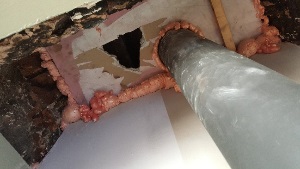
Here we have a closure plate fitted up against the flue pipe made from plaster board, wood and expanding foam. All of this is flammable. There is no flue liner and no service hatch so if the house wasn’t burnt down the flue could never be swept to remove soot which is also flammable.
You might think that this sort of thing is not that common !
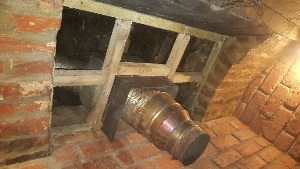
Here we have another timber closure support. The flue liner is for gas not solid fuel. The melting point is way too low and it has insufficient resistance to corrosion for solid fuel. Close up this liner was so pitted you could see through it. Thankfully this listed building lived to see another day.
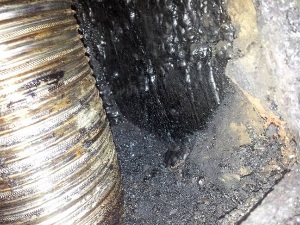
Here we can see a liner has been installed without first cleaning the chimney The tar up against the liner and coating the bricks is highly flammable.
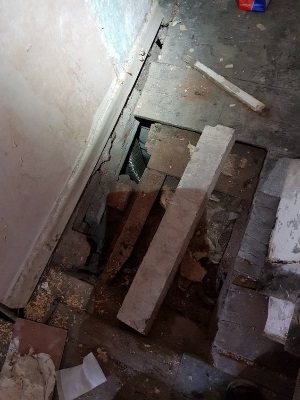
Here the builder who fitted the liner failed to brick the flue up so the liner was too close and exposed to the timber joists in the upstairs bedroom.
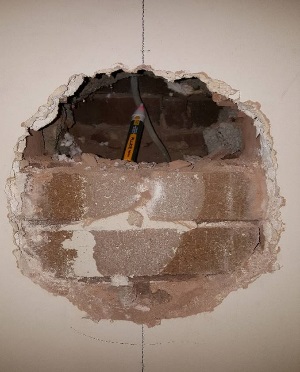
There are all sorts of things you might find in your chimneys maybe even live power cables! What could possibly go wrong ?
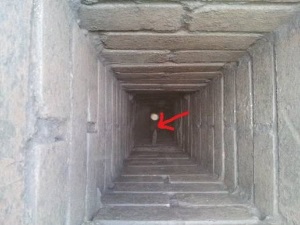
Obviously if you don’t have a live power cable to hand or some plumbing to stick in your flue you could hammer the spike from a rise and fall gutter bracket into the flue. Just waiting to rip the liner as its fitted.
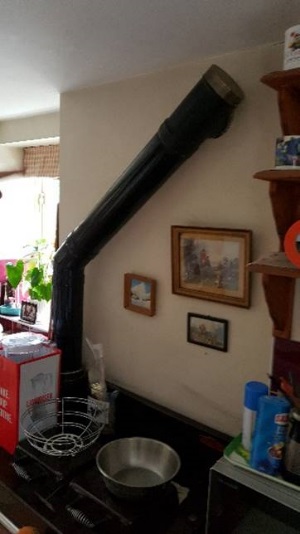
Well I guess if you don’t have the right stuff you could just fit the wrong stuff upside down. Here the debris trap is at the high point and all the sockets are facing downhill. So think drain pipe and it becomes obvious which way up the joints should be. Gas flows up and condensate runs down.
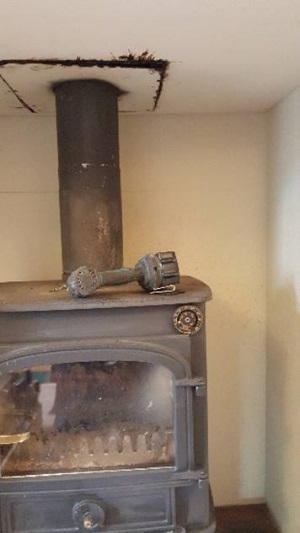
Here we see what happens when flue joints aren’t fitted correctly. The runny sticky condensate ( tar & creosote ) is starting to seep downwards and leak out and into the fabric of the building rendering this stove unusable until we sorted the problem.
Usually customers accept that there is an issue with the moisture content of the wood they are burning and address it before it becomes an issue.
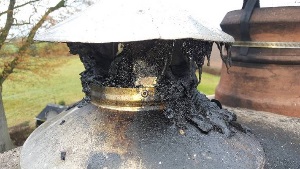
On the other hand you could just continue while lamenting the poor quality of the wood. In this instance the fix was to replace the liner a massive cost that could have easily been avoided with just a little bit of know how. A liner full of solid tar is quite a heavy item to get out of a chimney and doesn’t tend to bend very much either.
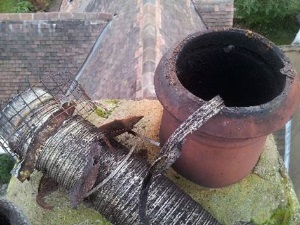
Over time a combination of poor maintenance or lack of know how can easily shorten the life of a liner. In this picture the liner has failed with the spiral wind unravelling within the flue. The problem was caused by burning wet wood with house coal to get it going. Sulphur in the coal combines with moisture from the wood to create a mild sulphuric acid solution which ultimately destroys the liner.
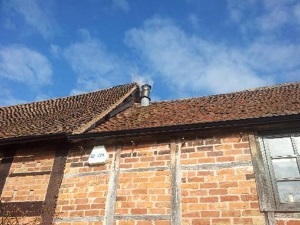
Here we have a barn conversion where the builder fitted a twin wall system terminating the chimney under the eaves of the adjoining building. Two problems here; one, carbon monoxide leaking into the neighbours building and two, flames from a chimney fire would ignite the timber facia boards and then the roof.
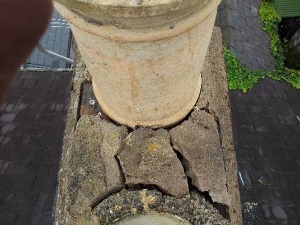
Not unsurprisingly fitting a cowl to this wouldn’t stop the rain coming into the downstairs fireplace. This chimney needed re flaunching and re pointing. It’s an expensive job but long term things just get worse and worse. When it comes to chimneys there are two schools of thought “a stitch in time” and “out of sight out of mind”. Not many people bother to have a good look at their chimneys until there’s an issue.
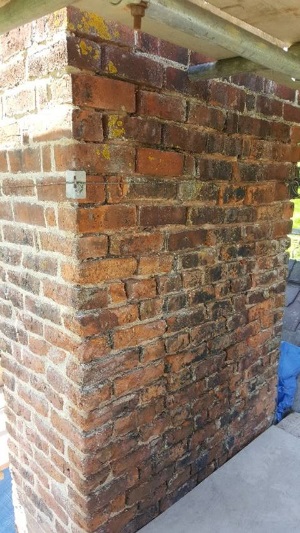
Here we are working on a lovely grade 2 listed building one side has been repointed with lime mortar and now the facing side is ready to be cut out and re pointed. A classic problem we see is either superficial pointing where the old mortar is not raked out or the use of really hard cement which is the wrong material to use in old buildings, way too hard. Ultimately it traps water into the joints and over time damages the bricks. Often snapping them.
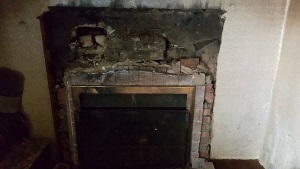
In Shropshire the fire service attend around 100 chimney fires each year. The culprits are installations that don’t meet building regs and a lack of maintenance.
This is what it looks like when they leave … if you’re lucky!